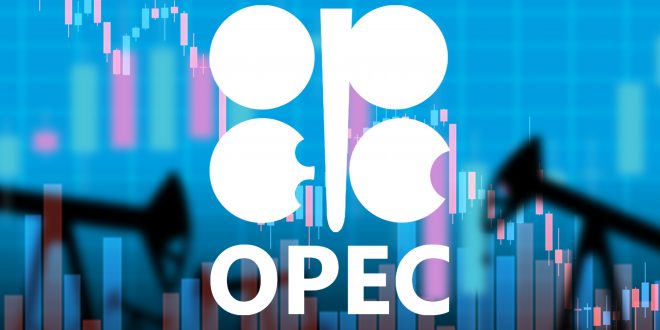The coming oil surplus could be much smaller than expected and could exert much less downward pressure on oil prices this year.
Demand remains strong as signaled in the six-month futures spread in Brent which has more than doubled since hitting a low point in December.
At the start of 2022, Omicron’s surge and record COVID cases in many major economies are combining with an expected oversupply on the oil market to give bears a reason to cheer.
Oil prices surged by 5 percent in the first trading week of the year as analysts focused on the possibility that the oversupply may not be as high as predicted a few months ago, also because of very low levels of inventories at the end of 2021. In addition, supply disruptions in Libya and Kazakhstan reminded market players of the volatility of much of the world’s oil production in geopolitically sensitive areas.
COVID developments will continue to be the biggest wild card in the market this year, but average global oil demand in 2022 is expected to exceed the pre-pandemic level from 2019, forecasters and analysts say.
Demand is set to grow even further from 2021 into 2022, barring new mass lockdowns in many places. Supply will no doubt also grow to the point of exceeding demand, most analysts predict. Not only is OPEC+ set to continue unwinding its production cuts, but non-OPEC+ producers—led by the United States—will also raise supply, especially at $80 oil, which means that global crude oil production is set to grow from both OPEC+ producers and those outside the pact.
However, the coming oil glut could be much smaller than expected and could exert much less downward pressure on oil prices this year. First, OPEC+ is nowhere near pumping to its overall quota. Depressed investments and a lack of spare capacity at many producers in the pact, especially African OPEC members, have made monthly oil production increases much lower than the allowed 400,000 bpd for OPEC+, of which 253,000 bpd is allocated to the ten OPEC members bound by the pact.
Last month was the seventh consecutive month in which OPEC+ had failed to deliver on its production increase, and the fifth straight month in which it had undershot its target production by more than 500,000 bpd, according to Bloomberg and OPEC data compiled by Bloomberg’s Lee.
OPEC+ produced 625,000 bpd below its overall production target in December 2021, slightly better than the 655,000-bpd shortfall off the target in November, per Bloomberg estimates.
OPEC is not faring much better, with African members dragging output down. According to the monthly Reuters survey, OPEC’s oil production increased by just 70,000 bpd in December from November as the cartel consistently failed to raise its production by 253,000 bpd a month as per the OPEC+ deal.
Although the group still expects a surplus on the market this year, it could be a smaller one compared to last month’s assessment. OPEC+ continues to see the Omicron impact on demand as “mild and short-lived,” just as OPEC said in its Monthly Oil Market Report (MOMR) in mid-December.
All oversupply models rely on the assumption that OPEC+ will actually deliver on its production target—something it has not done for seven consecutive months.
OPEC+ has been undershooting its collective production targets for months and will likely continue to do so in the months ahead. African OPEC members lack the capacity and investments to boost production, while Russia is estimated to pump and export lower volumes than its quota.
The underproduction could even become a major upside for oil in 2022, especially if Omicron’s dent to global oil demand remains limited to jet fuel, as the most recent estimates and analyses have shown. The biggest Arab Gulf producers have the means to raise output and fulfill their OPEC+ quotas, but this, of course, shrinks their spare production capacity, which accounts for the majority of the spare capacity globally.
As recent weeks showed, oil market balances are one conflict in Kazakhstan, or one blockade in Libya, away from turning into deficits. With lower spare capacity, mostly concentrated in Saudi Arabia, the United Arab Emirates (UAE), and Kuwait, a sudden supply disruption in 2022 would push oil prices higher.
The supply concern which is not going to disappear anytime soon is OPEC spare capacity. There are only a handful of members that have the capacity to increase output, whilst others are failing to meet their agreed production levels due to disruptions and lack of investment.
Goldman Sachs, for example, is very bullish on oil for 2022 and beyond due to low investment in the sector and the fact that only two oil producers in the world, Saudi Arabia and the UAE, currently have the capacity and the means to pump more oil than they did in January 2020, just before COVID. Everyone else is struggling,
Overall, demand remains robust as signaled in the six-month futures spread in Brent which has more than doubled since the December, omicron demand worry low point.
Lower-than-expected supply growth could soon wipe out the certainty of a large oil glut, as uncertainty and volatility will continue to be the only two certain things in oil markets this year.

 Noor Trends News, Technical Analysis, Educational Tools and Recommendations
Noor Trends News, Technical Analysis, Educational Tools and Recommendations




